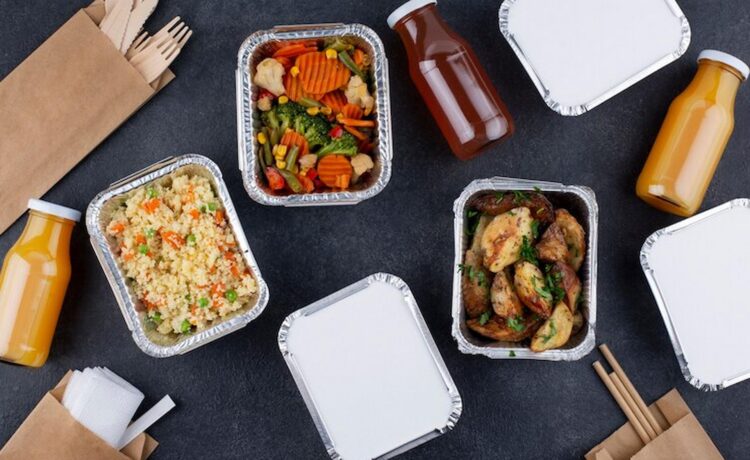Packaging design is critical in shaping consumer perceptions and influencing purchase decisions in the highly competitive food industry. This article explores how food packaging contributes to successful branding and drives recognition and loyalty.
In today’s fast-paced marketplace, food brands face an enormous challenge: standing out on crowded shelves. With countless options available to consumers, it’s not just the product that matters but how it’s presented. It is where packaging design becomes a game-changer. Packaging design’s influence on food branding transcends simple protection or containment of the product. It serves as the brand’s first point of contact with potential buyers, creating a visual identity that can build trust, evoke emotions, and drive sales. Studies have shown that 60-70% of purchase decisions are made in-store, often based solely on the packaging.
This article delves into the importance of food packaging in branding and how it can make or break a brand’s success. From visual elements to sustainability, we will examine the key factors that make packaging an integral part of a winning food branding strategy.
First Impressions Matter: Packaging as Brand Identity
Consumers form their first impressions of a food product within just a few seconds of seeing it on the shelf. It means that packaging is often the first consumer interaction with a brand. A well-designed package can communicate brand values, quality, and trustworthiness instantly.
- Visual Appeal: Colors, fonts, and imagery create a solid visual identity. Brands like Coca-Cola and Kellogg’s are recognised worldwide mainly due to their iconic packaging designs. Consistency in colour schemes and typography helps establish a brand’s identity, making it easily recognisable across different product lines.
- Psychological Influence: Certain colors evoke specific emotions. For example, green packaging can signify health and nature, while red may evoke a sense of urgency or passion. Food packaging aligning with a brand’s values and product type helps trigger emotional connections with consumers, boosting brand loyalty.
- Stand-Out Factor: Unique packaging helps differentiate a product in a sea of competitors. Shapes, textures, and innovative designs can draw the eye and create curiosity, encouraging consumers to pick up the product and explore further.
Communicating Key Information Effectively
Packaging vitally communicates important product details to the consumer. From nutritional information to brand storytelling, food packaging is more than just decoration—it’s a functional element of branding.
- Regulatory Information: Food packaging must include critical information such as nutritional values, ingredients, and expiration dates. Clear, easy-to-read labels help build trust and reassure consumers about the product’s safety and quality.
- Brand Storytelling: Beyond the required information, packaging is a chance to tell the brand’s story. Whether it’s about the company’s heritage, sustainability efforts, or product benefits, the narrative presented on packaging helps connect with consumers on a deeper level. For example, a package might include a short message about how the ingredients are locally sourced or how the brand supports eco-friendly farming practices.
- Target Audience: Packaging should also communicate with the intended demographic. Child-friendly food products often feature bright colours and playful fonts, while premium organic food packaging might focus on minimalist design with earthy tones to appeal to health-conscious consumers.
Sustainability and Eco-Friendly Packaging
In the modern marketplace, consumers are increasingly mindful of environmental issues. Brands that adopt eco-friendly packaging can appeal to this growing segment and position themselves as responsible and forward-thinking.
- Sustainable Materials: Many food brands have started using biodegradable, recyclable, or reusable materials in their packaging. It reduces environmental impact and resonates with consumers who prioritise sustainability. Packaging made from compostable materials or reusable containers helps reinforce a brand’s commitment to reducing its carbon footprint.
- Minimalism: The minimalist design trend reflects aesthetic preferences and environmental concerns. Simple, clean packaging designs often use fewer materials and less ink, reducing waste and resource consumption. Consumers are drawn to brands that prioritise functionality and eco-consciousness without unnecessary embellishments.
Packaging as a Marketing Tool: Enhancing Consumer Experience
Food packaging goes beyond just wrapping the product. It serves as a marketing tool that can enhance the consumer’s overall experience with the brand, influencing repeat purchases and customer loyalty.
- Unboxing Experience: In the age of social media, the unboxing experience is increasingly important. Creative packaging designs that offer an engaging unboxing process can lead to consumers sharing their experiences online, effectively creating free word-of-mouth marketing for the brand. Companies like Apple have mastered this with their tech products, but the trend is also emerging in the food industry, where clever or luxurious packaging encourages social media sharing.
- Limited Editions and Special Campaigns: Packaging can also be used as a platform for seasonal promotions, limited edition releases, or unique campaigns. For example, festive holiday packaging or collaborations with popular culture can create a sense of urgency, prompting consumers to purchase for fear of missing out.
- Product Sampling: Transparent packaging that allows customers to see the product inside can build trust and reduce uncertainty. For example, a clear cereal box window showcasing the product helps consumers feel more confident in their choices.
Innovation in Packaging: The Role of Technology
Technology has opened new doors for food packaging, enabling brands to offer consumers more interactive, convenient, and secure options. Incorporating innovative technologies in packaging can boost consumer engagement and satisfaction.
- QR Codes and Augmented Reality (AR): QR codes printed on food packaging allow consumers to access more detailed product information, watch videos, or even enter contests. Some brands have also integrated AR into their packaging, allowing consumers to scan the package with their smartphones to see digital animations or interactive experiences.
- Innovative Packaging: Technological advances have made it possible for packaging to include sensors that monitor freshness or indicate when the product is no longer safe to eat. These innovations protect consumers and enhance brand loyalty by ensuring product quality.
- Convenience Features: Resealable bags, portion control packs, and microwave-safe containers are just a few examples of how packaging innovation adds value for consumers. These small conveniences can set a brand apart from competitors, making the product more appealing to busy, on-the-go consumers.
Building Brand Loyalty through Consistency
Consistency in packaging design is essential for building long-term brand loyalty. A strong, cohesive visual identity across all product lines helps establish trust and makes it easier for consumers to recognise the brand on store shelves.
- Consistency Across Platforms: Brands that maintain consistent packaging design, colour schemes, and logo placement across their entire product range are more likely to create a sense of familiarity and trust among consumers. This consistency should also extend to online platforms, where product images should mirror the in-store experience.
- Emotional Connections: When consumers become familiar with a particular packaging design, it can evoke positive memories or experiences associated with the product. For example, many people have nostalgic connections with the iconic packaging of brands like Oreos or Campbell’s Soup. These emotional bonds contribute to repeat purchases and long-term brand loyalty.
Conclusion
In the competitive world of food branding, packaging design is far more than just an aesthetic choice—it’s a critical factor influencing purchasing decisions, fostering brand loyalty, and driving sales. From creating solid first impressions to communicating essential information and reflecting brand values, food packaging plays a central role in shaping the consumer’s experience with a brand.
Food brands can leverage packaging to stand out in a crowded market and build lasting connections with their target audience by focusing on visual appeal, clear communication, sustainability, and innovation. Whether through bold designs or eco-friendly materials, successful food packaging is a powerful tool for enhancing brand identity and ensuring long-term success.





